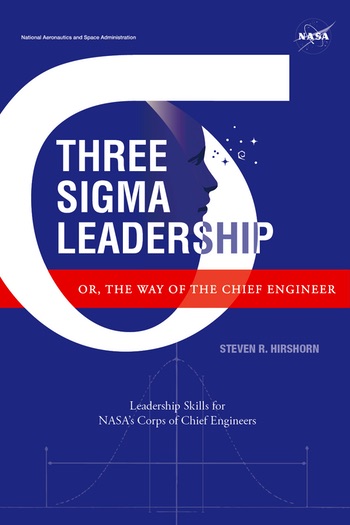Review: Three Sigma Leadershipby Jeff Foust
|
| As someone who has worked at both Johnson Space Center and NASA Headquarters, he notes that “those at the Centers view HQ much differently than those inside HQ view themselves,” with headquarters much less bureaucratic that perceived at the field centers. |
Hirshorn, whose career included time as a shuttle flight controller, a lead engineer for the Constellation program, and chief engineer of the aeronautics mission directorate at NASA, distills his advice into two dozen lessons, one per chapter. Some are specific to engineering work, particularly at NASA, like “serving as a technical authority” and “acting as the lead technical integrator.” Others, though, are good advice for anyone in a managerial position, such as “building a team” and “getting a mentor/being a mentor.” And anyone can benefit from “learning continuously” and “being the adult in the room.”
That advice all sounds like common sense, but he has to explain it because even commonsense advice can be ignored. He includes in the book many anecdotes—usually with specific names removed—about people and events that ran afoul of that guidance. During engineering discussions, people “may lose their temper, they may become uncivil, and may drive the discussion to resolution by schoolyard brawl. I’ve seen it happen,” he writes in the chapter on being the adult in the room.
Besides the advice, which is useful whether or not you’re a chief engineer at NASA, there are other insights about the agency. As someone who has worked at both Johnson Space Center and NASA Headquarters, he notes that “those at the Centers view HQ much differently than those inside HQ view themselves,” with headquarters much less bureaucratic that perceived at the field centers. “Still, within HQ, I’ve found far fewer barriers between its offices than I have witnessed between organizations and directorates at the Centers.”
The advice in the book is good guidance for NASA chief engineers and others who run technical organizations, or simply those interested in better understanding how NASA projects are managed. (One piece of advice is called “being the box top,” or taking a big-picture view of a project. Hirshorn said he heard it from Robert Lightfoot, the former NASA associate administrator and acting administrator, who liked to put together jigsaw puzzles, whose completed image is printed on the top of the box it came in.) The book is also a reminder that NASA’s amazing technical accomplishments are the product of people who, like the rest of us, sometimes need to be reminded to be the adult in the room.
Note: we are using a new commenting system, which may require you to create a new account.
